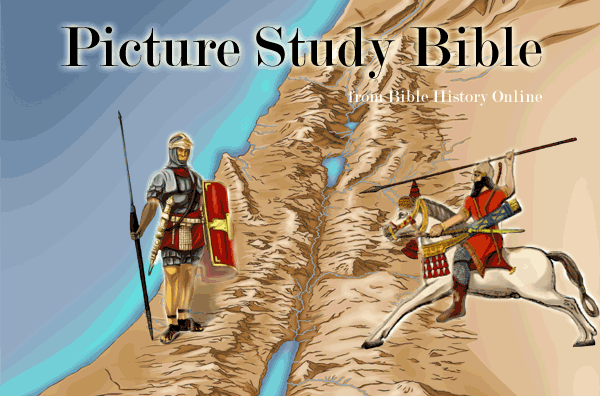Revelation 1:1 The Revelation of Jesus Christ, which God gave unto him, to shew unto his servants things which must shortly come to pass; and he sent and signified it by his angel unto his servant John: - Free Bible Online
Revelation 1:1 The Revelation of Jesus Christ, which God gave Him to show to His bond-servants, the things which must shortly take place; and He sent and communicated [it] by His angel to His bond-servant John,
Re 1:1-20. TITLE: SOURCE AND OBJECT OF THIS REVELATION: BLESSING ON THE READER AND KEEPER OF IT, AS THE TIME IS NEAR: INSCRIPTION TO THE SEVEN CHURCHES: APOSTOLIC GREETING: KEYNOTE, "BEHOLD HE COMETH" (Compare at the close, Re 22:20, "Surely I come quickly"): INTRODUCTORY VISION OF THE SON OF MAN IN GLORY, AMIDST THE SEVEN CANDLESTICKS, WITH SEVEN STARS IN HIS RIGHT HAND.
1. Revelation--an apocalypse or unveiling of those things
which had been veiled. A manifesto of the kingdom of Christ. The
travelling manual of the Church for the Gentile Christian times. Not a
detailed history of the future, but a representation of the
great epochs and chief powers in developing the kingdom of God in
relation to the world. The "Church-historical" view goes counter
to the great principle that Scripture interprets itself. Revelation is
to teach us to understand the times, not the times to interpret to us
the Apocalypse, although it is in the nature of the case that a reflex
influence is exerted here and is understood by the prudent
[AUBERLEN]. The book is in a series of parallel
groups, not in chronological succession. Still there is an organic
historical development of the kingdom of God. In this book all the
other books of the Bible end and meet: in it is the consummation of all
previous prophecy. Daniel foretells as to Christ and the Roman
destruction of Jerusalem, and the last Antichrist. But John's
Revelation fills up the intermediate period, and describes the
millennium and final state beyond Antichrist. Daniel, as a godly
statesman, views the history of God's people in relation to the four
world kingdoms. John, as an apostle, views history from the
Christian Church aspect. The term Apocalypse is applied
to no Old Testament book. Daniel is the nearest approach to it; but
what Daniel was told to seal and shut up till the time of the
end, John, now that the time is at hand
(Re 1:3),
is directed to reveal.
of Jesus Christ--coming from Him. Jesus Christ, not John
the writer, is the Author of the Apocalypse. Christ taught many things
before His departure; but those which were unsuitable for announcement
at that time He brought together into the Apocalypse [BENGEL]. Compare His promise,
Joh 15:15,
"All things that I have heard of My Father, I have made known unto
you"; also,
Joh 16:13,
"The Spirit of truth will show you things to come." The Gospels
and Acts are the books, respectively, of His first advent, in the
flesh, and in the Spirit; the Epistles are the inspired comment on
them. The Apocalypse is the book of His second advent and the events
preliminary to it.
which God gave unto him--The Father reveals Himself and His will
in, and by, His Son.
to show--The word recurs in
Re 22:6:
so entirely have the parts of Revelation reference to one another. It
is its peculiar excellence that it comprises in a perfect compendium
future things, and these widely differing: things close at hand, far
off, and between the two; great and little; destroying and saving;
repeated from old prophecies and new; long and short, and these
interwoven with one another, opposed and mutually agreeing; mutually
involving and evolving one another; so that in no book more than in
this would the addition, or taking away, of a single word or clause
(Re 22:18, 19),
have the effect of marring the sense of the context and the comparison
of passages together [BENGEL].
his servants--not merely to "His servant John," but to
all His servants (compare
Re 22:3).
shortly--Greek, "speedily"; literally, "in," or "with
speed." Compare "the time is at hand,"
Re 1:3; 22:6,
"shortly";
Re 22:7,
"Behold, I come quickly." Not that the things prophesied were
according to man's computation near; but this word "shortly" implies a
corrective of our estimate of worldly events and periods. Though a
"thousand years"
(Re 20:1-15)
at least are included, the time is declared to be at hand.
Lu 18:8,
"speedily." The Israelite Church hastened eagerly to the predicted end,
which premature eagerness prophecy restrains (compare
Da 9:1-27).
The Gentile Church needs to be reminded of the transitoriness of the
world (which it is apt to make its home) and the nearness of Christ's
advent. On the one hand Revelation says, "the time is at hand"; on the
other, the succession of seals, &c., show that many intermediate events
must first elapse.
he sent--Jesus Christ sent.
by his angel--joined with "sent." The angel does not come
forward to "signify" things to John until
Re 17:1; 19:9, 10.
Previous to that John receives information from others. Jesus Christ
opens the Revelation,
Re 1:10, 11; 4:1;
in
Re 6:1
one of the four living creatures acts as his informant; in
Re 7:13,
one of the elders; in
Re 10:8, 9,
the Lord and His angel who stood on the sea and earth. Only at the end
(Re 17:1)
does the one angel stand by Him (compare
Da 8:16; 9:21;
Zec 1:19).
JFB.
Questions Related to this Verse
Where in Scripture do angels reveal prophecy to prophets?Select a Chapter
-
Revelation 1 |
Revelation 2 |
Revelation 3 |
Revelation 4 |
Revelation 5 |
Revelation 6 |
Revelation 7 |
Revelation 8 |
Revelation 9 |
Revelation 10 |
Revelation 11 |
Revelation 12 |
Revelation 13 |
Revelation 14 |
Revelation 15 |
Revelation 16 |
Revelation 17 |
Revelation 18 |
Revelation 19 |
Revelation 20 |
Revelation 21 |
Revelation 22 |
Select a Book of the Bible
-
Genesis |
Exodus |
Leviticus |
Numbers |
Deuteronomy |
Joshua |
Judges |
Ruth |
1 Samuel |
2 Samuel |
1 Kings |
2 Kings |
1 Chronicles |
2 Chronicles |
Ezra |
Nehemiah |
Esther |
Job |
Psalms |
Proverbs |
Ecclesiastes |
Song of Solomon |
Isaiah |
Jeremiah |
Lamentations |
Ezekiel |
Daniel |
Hosea |
Joel |
Amos |
Obadiah |
Jonah |
Micah |
Nahum |
Habakkuk |
Zephaniah |
Haggai |
Zechariah |
Malachi |
Matthew |
Mark |
Luke |
John |
Acts |
Romans |
1 Corinthians |
2 Corinthians |
Galatians |
Ephesians |
Philippians |
Colossians |
1 Thessalonians |
2 Thessalonians |
1 Timothy |
2 Timothy |
Titus |
Philemon |
Hebrews |
James |
1 Peter |
2 Peter |
1 John |
2 John |
3 John |
Jude |
Revelation |
The Book of Revelation
Revelation 1:9-11 - I John, who also am your brother, and companion in tribulation, and in the kingdom and patience of Jesus Christ, was in the isle that is called Patmos, for the word of God, and for the testimony of Jesus Christ. I was in the Spirit on the Lord's day, and heard behind me a great voice, as of a trumpet, Saying, I am Alpha and Omega, the first and the last: and, What thou seest, write in a book, and send [it] unto the seven churches which are in Asia; unto Ephesus, and unto Smyrna, and unto Pergamos, and unto Thyatira, and unto Sardis, and unto Philadelphia, and unto Laodicea.
Revelation 19:11-16 - And I saw heaven opened, and behold a white horse; and he that sat upon him [was] called Faithful and True, and in righteousness he doth judge and make war. His eyes [were] as a flame of fire, and on his head [were] many crowns; and he had a name written, that no man knew, but he himself. And he [was] clothed with a vesture dipped in blood: and his name is called The Word of God. And the armies [which were] in heaven followed him upon white horses, clothed in fine linen, white and clean. And out of his mouth goeth a sharp sword, that with it he should smite the nations: and he shall rule them with a rod of iron: and he treadeth the winepress of the fierceness and wrath of Almighty God. And he hath on [his] vesture and on his thigh a name written, KING OF KINGS, AND LORD OF LORDS.
Revelation 22:18-20 For I testify unto every man that heareth the words of the prophecy of this book, If any man shall add unto these things, God shall add unto him the plagues that are written in this book: And if any man shall take away from the words of the book of this prophecy, God shall take away his part out of the book of life, and out of the holy city, and [from] the things which are written in this book. He which testifieth these things saith, Surely I come quickly. Amen. Even so, come, Lord Jesus.
Revelation in The New Testament - A Brief Overview

Painting of St. John the Evangelist by Reni - 1620
Introduction to The Book of Revelation
Brief Summary. John describes the seven churches in Asia, he records the visions that he received, and in the prophecy Jesus returns as the kinsman redeemer to claim this world as His inheritance. The final battle unfolds in a 7 year period through a series of seal, trumpet, and bowl judgements, He casts the antichrist and false prophet into the lake of fire and sets up the New Jerusalem, the new heaven and new earth for the redeemed. The book of Revelation is in harmony with the prophecies in the Old Testament especially the ones written by Ezekiel, Daniel and Zechariah.
Summary of The Book of Revelation
Author. John the apostle names himself as the one who wrote down what the Lord said through the angel. The earliest writers in the church like Justin Martyr, Irenaeus, Hippolytus, Tertullian, Clement of Alexandria and the Muritorian all credit John the apostle as author of the book of Revelation.
Date. John indicates that he was on the Island of Patmos when he received the prophecy (Revelation 1:9). According to tradition John wrote during the reign of the Emperor Domitian which would have been around 95 AD. Tradition also states that John was released the next year and was allowed to return to Ephesus. Domitian was perhaps the cruelest Emperor toward the Christians, demanding that he was to worshipped as deity, or be put to death.
Audience. John said that the prophecy was directed to the seven churches in Asia (Revelation 1:4).
Outline of the Book of Revelation
Description and Fate of False Teachers - 1:1-16
Encouragement to Believers in Christ - 1:17-25

The Name Jesus In Ancient Hebrew Text
"Yeshua" in First Century Hebrew Text. This is how the name "Jesus"
would have been written in ancient Hebrew documents. The four letters or
consonants from right to left are Yod, Shin, Vav, Ayin (Y, SH, OO, A).
Jesus is the Greek name for the Hebrew name Joshua or Y'shua which means
"The LORD or Yahweh is Salvation".
The Book of Revelation Resources
Map of the Roman Empire (14 A.D.) - This map reveals the Roman Empire during the time shortly after the birth of Jesus, in 14 AD at the time of the death of Augustus. The order which prevailed in this extensive empire, the good military roads, and the use of Koine Greek as the general language of culture throughout the area were among the factors which multiplied the rapid spread of the Gospel of Jesus Christ. (Color Map)
Map of Paul's First Missionary Journey (48 A.D.) - This map reveals the areas in Asia Minor where Paul visited in his first missionary journey. Around 48 AD, in the springtime, Paul and his companions Barnabas and Mark were sent on a mission from the church in Antioch. This would be the first of Paul's Missionary Journey's. (Color Map)
Map of Paul's Second Missionary Journey (51 A.D.) - This map reveals the areas in Asia and Greece where Paul visited in his second missionary journey. Paul re-visits a couple cities in Asia, one of which was Lystra where he was stoned and left for dead a few years earlier. He later has a vision that leads him over to Greece and Paul and his companions travel and minister in various cities in Greece (Philippi, Thessalonica, Berea, Athens and Corinth. Later Paul returns to Ephesus and finally to Caesarea and Antioch. (Color Map)
Map of Paul's Third Missionary Journey (54 A.D.) - This map reveals the areas in Asia and Greece where Paul visited in his third missionary journey. On Paul's third missionary journey he returned to the cities he had first visited on his first missionary journey. During this time he decided to remain in Ephesus for about 3 years, and this city was the main focus of his activities and an important Christian community (Acts 19). (Color Map)
Map of the New Testament World - This map reveals the "Nations" within the ancient world during the first century A.D., the time of the New Testament. The map includes the areas of Israel, Asia, Greece, and Italy. (Color Map)
Map of New Testament Greece This map reveals the cities within Greece in the ancient world during the first century A.D.,The map includes the principal cities of Greece like: Athens, Corinth, and Thessalonica, and provinces like Macedonia and Achaia. (Color Map)
Map of New Testament Asia - This map shows the cities within
Asia Minor during the first century A.D., the time of the New
Testament. The map includes the principal cities of Asia
including Tarsus, Ephesus, and Colossae, and provinces like
Galatia and Pamphilia. (Color Map)
Bibliography Information
Free Bible Online Picture Study Bible, King James Version. New York: American Bible Society: www.free-bible.com, 1995-2013. Bible History Picture Study Bible. May 09, 2024.
- King James Bible Home
- Free Bible Home Page
- Bible Encyclopedia (ISBE)
- Online Bible (KJV)
- Naves Topical Bible
- Smith's Bible Dictionary
- Easton's Bible Dictionary
- Fausset's Bible Dictionary
- Matthew Henry Bible Commentary
- Hitchcock's Bible Dictionary
Read The Bible
- 1599 Geneva Bible (GNV)
- 21st Century King James Version (KJ21)
- American Standard Version (ASV)
- Amplified Bible (AMP)
- Amplified Bible, Classic Edition (AMPC)
- Authorized (King James) Version (AKJV)
- BRG Bible (BRG)
- Christian Standard Bible (CSB)
- Common English Bible (CEB)
- Complete Jewish Bible (CJB)
- Contemporary English Version (CEV)
- Darby Translation (DARBY)
- Disciples’ Literal New Testament (DLNT)
- Douay-Rheims 1899 American Edition (DRA)
- Easy-to-Read Version (ERV)
- English Standard Version (ESV)
- English Standard Version Anglicised (ESVUK)
- Evangelical Heritage Version (EHV)
- Expanded Bible (EXB)
- GOD’S WORD Translation (GW)
- Good News Translation (GNT)
- Holman Christian Standard Bible (HCSB)
- International Children’s Bible (ICB)
- International Standard Version (ISV)
- J.B. Phillips New Testament (PHILLIPS)
- Jubilee Bible 2000 (JUB)
- King James Version (KJV)
- Lexham English Bible (LEB)
- Living Bible (TLB)
- Modern English Version (MEV)
- Mounce Reverse Interlinear New Testament (MOUNCE)
- Names of God Bible (NOG)
- New American Bible (Revised Edition) (NABRE)
- New American Standard Bible (NASB)
- New American Standard Bible 1995 (NASB1995)
- New Catholic Bible (NCB)
- New Century Version (NCV)
- New English Translation (NET)
- New International Reader's Version (NIRV)
- New International Version - UK (NIVUK)
- New International Version (NIV)
- New King James Version (NKJV)
- New Life Version (NLV)
- New Living Translation (NLT)
- New Matthew Bible (NMB)
- New Revised Standard Version (NRSV)
- New Revised Standard Version Catholic Edition (NRSVCE)
- New Revised Standard Version, Anglicised (NRSVA)
- New Revised Standard Version, Anglicised Catholic Edition (NRSVACE)
- New Testament for Everyone (NTE)
- Orthodox Jewish Bible (OJB)
- Revised Geneva Translation (RGT)
- Revised Standard Version (RSV)
- Revised Standard Version Catholic Edition (RSVCE)
- The Message (MSG)
- The Voice (VOICE)
- Tree of Life Version (TLV)
- World English Bible (WEB)
- Worldwide English (New Testament) (WE)
- Wycliffe Bible (WYC)
- Young's Literal Translation (YLT)
Table of Contents
Main Menu
- Ancient Assyrian Social Structure
- Ancient Babylonia
- Ancient Canaan During the Time of Joshua
- Ancient History Timeline
- Ancient Oil Lamps
- Antonia Fortress
- Archaeology of Ancient Assyria
- Assyria and Bible Prophecy
- Augustus Caesar
- Background Bible Study
- Bible
- Biblical Geography
- Fallen Empires - Archaeological Discoveries and the Bible
- First Century Jerusalem
- Glossary of Latin Words
- Herod Agrippa I
- Herod Antipas
- Herod the Great
- Herod's Temple
- High Priest's in New Testament Times
- Jewish Literature in New Testament Times
- Library collection
- Map of David's Kingdom
- Map of the Divided Kingdom - Israel and Judah
- Map of the Ministry of Jesus
- Matthew Henry Bible Commentary
- Messianic Prophecy
- Nero Caesar Emperor
- Online Bible Maps
- Paul's First Missionary Journey
- Paul's Second Missionary Journey
- Paul's Third Missionary Journey
- Pontius Pilate
- Questions About the Ancient World
- Tabernacle of Ancient Israel
- Tax Collectors in New Testament Times
- The Babylonian Captivity
- The Black Obelisk of Shalmaneser
- The Books of the New Testament
- The Court of the Gentiles
- The Court of the Women in the Temple
- The Destruction of Israel
- The Fall of Judah with Map
- The History Of Rome
- The Incredible Bible
- The Jewish Calendar in Ancient Hebrew History
- The Life of Jesus in Chronological Order
- The Life of Jesus in Harmony
- The Names of God
- The New Testament
- The Old Testament
- The Passion of the Christ
- The Pharisees
- The Sacred Year of Israel in New Testament Times
- The Samaritans
- The Scribes
Ancient Questions
- How did the ancient Greeks and Romans practice medicine and treat illnesses?
- What were the major contributions of ancient Babylon to mathematics and astronomy?
- How did the ancient Persians create and administer their vast empire?
- What were the cultural and artistic achievements of ancient India, particularly during the Gupta Empire?
- How did ancient civilizations like the Incas and Aztecs build their remarkable cities and structures?
- What were the major trade routes and trading practices of the ancient world?
- What was the role of slavery in ancient societies like Rome and Greece?
- How did the ancient Mayans develop their sophisticated calendar system?
- What were the key events and significance of the Battle of Thermopylae in ancient Greece?
- What was life like for women in ancient Rome?
Bible Study Questions
- What does biblical archaeologist said about hieroglyphics?
- Where is the Negev where Abram went to in Genesis?
- What is the name of Ramallah in the Bible?
- How do we approach and study the historical and cultural context of biblical passages?
- What is the significance of the Psalms in personal and corporate worship?
- How do we discern and apply biblical principles to contemporary ethical issues?
- What is the biblical perspective on the nature of God's love and mercy?
- How do we interpret and understand apocalyptic literature in the Bible?
- What are the different covenants in the Bible and their significance?
- How do we grow in spiritual maturity and develop a deeper understanding of the Word?
About
Welcome to Free Bible: Unearthing the Past, Illuminating the Present! Step into a world where ancient history and biblical narratives intertwine, inviting you to explore the rich tapestry of human civilization.
Discover the captivating stories of forgotten empires, delve into the customs and cultures of our ancestors, and witness the remarkable findings unearthed by dedicated archaeologists.
Immerse yourself in a treasure trove of knowledge, where the past comes alive and illuminates our understanding of the present.
Join us on this extraordinary journey through time, where curiosity is rewarded and ancient mysteries await your exploration.
Recent posts
-

Personalized Baby Bibs for every Little
Every little one deserves to feel cherished and celebrated from the very start. These custom baby bibs, lovingly personalized with care, make the perf... -

The Art of Custom Home Design: Unveiling Wellcore Corporation's Expertise
In the ever-evolving panorama of contemporary production, customization reigns ultimate as a testament to innovation and the preference for a without ... -

Birthstones: A Sparkling Symphony of History, Symbolism, and Self-Expression
Birthstones, the ones fascinating gems linked to our delivery month, boast a records as rich and multifaceted because the jewels themselves. Their tal... -

The use of medicinal mushrooms by different religions of the world.
The integration of medicinal mushrooms into various religious practices around the world is a fascinating testament to their revered status across cul... -

Explore a Collection of Religious SVGs
Religious SVGs are versatile design elements that can be used to create a variety of personalized and meaningful projects. Whether you're looking to e...
